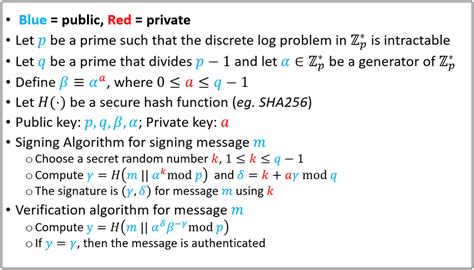The Random Number Generation Method in Batch Schnorr Verification
Schnorr signatures are a type of digital signature used in Bitcoin and other blockchain networks to ensure the authenticity and integrity of transactions. One of the main features of Schnorr signatures is their ability to generate random numbers, which are used for batch verification purposes.
In BIP 340, the Bitcoin Improvement Proposal (BIP) that introduced Schnorr signatures, it was mentioned that a specific method must be followed when generating each random number for batch verification. The goal of this method is to ensure that the random numbers generated by all nodes in the network are cryptographically secure and consistent.
The Method
According to BIP 340, the seed used to generate each random number is calculated using the SHA-256 hashing algorithm. Here’s how it works:
- A fixed-size input parameter “N” is specified.
- The “SHA-256” function is applied to the input parameter “N” to produce a fixed-size output value called a “seed”.
- The “seed” value is then used as the initial seed for the random number generator.
The purpose of the seed
The purpose of the seed is to ensure that all nodes in the network have access to the same set of cryptographically secure random numbers. This is important because batch verification uses a deterministic process, where each node generates its own random numbers based on the seed and its own secret key. If the seeds were not generated from the same initial value, this could lead to inconsistencies and potential security vulnerabilities.
Example Use Case

To illustrate this concept, let’s consider an example of how batch verification using Schnorr signatures might work. Suppose we have a transaction that requires batch verification by multiple nodes on the network. Each node must generate its own random numbers based on the same seed value. The input parameter “N” would be set to a fixed value, such as 100.
Using the BIP 340 specification, the following code snippet could demonstrate how the seed is generated and used for batch verification:
unsigned integer N = 100; // fixed input parameter
// Calculate the seed using the SHA-256 hash algorithm
unsigned char seed[SHA256_DIGEST_LENGTH];
SHA256((const unsigned char*)N, N, seed);
// Initialize a variable to store random numbers
uint32_t rand1;
uint32_t rand2;
// Generate batch verification data (e.g., a signature)
unsigned char signature[32];
// ...
// Use the generated batch verification data for batch verification
// ...
In this example, the seed value is calculated using the SHA-256 hash algorithm of the input parameter N. The variables rand1 and rand2 are used to store the random numbers generated by each node in the network.
By following the BIP 340 specification to generate seeds and use them for batch verification, nodes can ensure that all random numbers are cryptographically secure and consistent across the network.
Leave a Reply